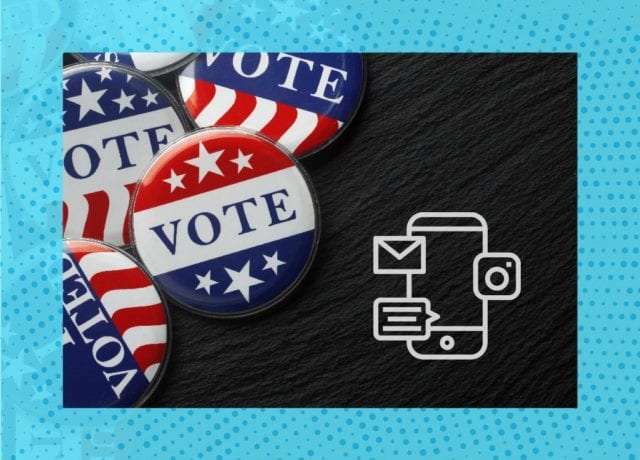As the presidential campaign ramps up, there has been discussion about how different social platforms are managing political ads. After the 2016 election, there is a lot of debate surrounding the role of social media in free speech, fact checking and its role in democracy.
Each social platform has a different stance. Here’s the latest.
We encourage you to subscribe to our blog for the latest data surrounding the advertising industry. We will provide daily updates as COVID-19 continues to make its mark on the US economy.

Facebook is the platform most resistant towards interference of free speech—including political lies and misinformation.
Right now, it is facing the Stop Hate for Profit campaign. More than 1,000 companies are not advertising on its platform this month to flag Facebook’s attention. The Anti-Defamation League, the NAACP, Color of Change and more are asking Facebook to stop the spread of hateful posts and incitements on its platform.
Though the campaign did not make much of a dent in Facebook’s ad revenue, it did stir up friction for the PR team. In response, Facebook pledged to ban white nationalism on its platform, hire a new executive with experience in civil rights and meet other boycott demands.
This follows a development from last month. Facebook closed a loophole surrounding political ads.
Political ads previously had a disclaimer saying “paid for by” attached to the creative. However, if users shared the ads to their own feed, the label disappeared. This allowed misinformation to spread. Now, Facebook discloses if these images were at one point ads.
It is also rumored that Facebook is considering banning political ads altogether, but that update has yet to become official. If this change happens, it will be a big reversal for the company’s long-standing bent towards not being an arbiter of facts.
Last year, Twitter completely banned political ads.
In a tweet, CEO Jack Dorsey wrote, “the Internet political ads present entirely new challenges to civic discourse – machine-learning-based optimization of messaging and microtargeting, unchecked misleading information and deep fakes, all at increasing velocity, sophistication and overwhelming scale.”
Essentially, Dorsey is saying social media platforms and the U.S. democracy can’t handle the type of political campaigns (or interference) a candidate could execute.
Due to this, Twitter won’t allow politicians to micro-target audiences and place paid images in their feed without their knowledge. They will avoid making profits from politicians in order to avoid any deep fakes.
Reddit announced changes to their policy three months ago. All ads, including political ads, were prohibited from using deceptive or false information. Each ad is manually reviewed and only federal level politicians are allowed to run ads on the platform.
“That said, beginning today, we will also require political advertisers to work directly with our sales team and leave comments “on” for (at least) the first 24 hours of any given campaign,” the Reddit team wrote in the announcement. “We will strongly encourage political advertisers to use this opportunity to engage directly with users in the comments.”
Also, Reddit launched the subreddit r/RedditPoliticalAds to offer full transparency on political advertisers, their campaigns, targeting and spend. This includes transparency on political advertising from earlier in the campaign, starting in January 2019.
Take one example. Users can see that Kamala Harris ran an ad on January 30, 2019. Users can see the copy, that it gained less than 10,000 impressions, who it targeted and that it was purchased for less than $100.
This approach is a valuable approach as it doesn’t forbid political promotion and it is less likely to spread outright lies.
Snapchat
Similar to the manual revision process of Reddit, Snapchat says the team personally fact checks political ads before allowing them on the platform.
“I think what we try to do is create a place for political ads on our platform, especially because we reach so many young people and first-time voters we want them to be able to engage with the political conversation,” explained Snap CEO Evan Spiegel to CNBC. “But we don’t allow things like misinformation to appear in that advertising.”
Social doesn’t have to be an enemy of democracy—it can be a great way to encourage people to vote and learn about candidates. Snap’s taking a more exhaustive approach, but one that may perhaps encourage participation without manipulation.
Google and YouTube
Google (i.e. YouTube) will restrict political advertising to a certain extent, especially in a campaign’s ability to micro-target users.
Campaigns will still have some access to targeting features like: age, gender, and geography across products. However, ‘Customer Match,’ a tool based on more advanced online profiles, will no longer be a possibility.
The main formats Google will offer to political advertisers are search ads, YouTube ads and display ads.
As the campaign approaches, policies may continue to change. We’ll follow the most recent updates and share interesting developments here.
For more updates like this, stay tuned. Subscribe to our blog for more updates on coronavirus and its mark on the economy.



